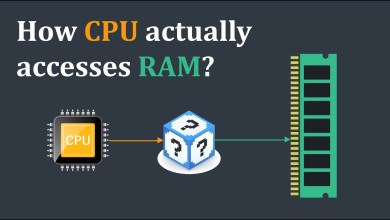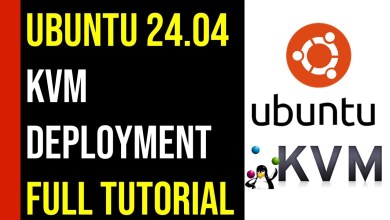How to clone Virtual Machine in VirtualBox #shorts #devops #virtualbox #programming
How to clone Virtual Machine in VirtualBox
Stop virtual machine
then go to VirtualBox
right click on your machine
click clone
insert machine name
select generate new Mac address and click NEXT
Select full clone and next
we don’t need snapshots so leave it and click next
now we can update base machne name
and run bouth machines
log in to new machine
type nmtui and update ip address
now we must reboot bouth machines
and after it we can check connection betwean machines
by running
ping and ip address
#VirtualBox #CloneVM #VMTutorial #Virtualization #TechQuickTip #ITTutorial #VMCopy #NetworkManagement #HomeLab #BeginnerFriendly #VirtualMachineManagement #CloneTutorial #NetworkConnectivity #Tutorial #howto
Want to duplicate your virtual machine (VM) for testing, development, or backups in VirtualBox? This step-by-step guide makes it EASY, even for beginners!
In this video, you’ll learn:
How to safely shut down your VM before cloning.
The power of cloning VMs for creating identical environments.
Choosing the right clone type (Full Clone vs. Linked Clone) for optimal storage usage.
Generating unique MAC addresses for network connectivity in your cloned VM.
Updating the base machine name for clear identification.
Launching both VMs simultaneously to streamline your workflow.
Logging in to your new VM for further configuration.
Using nmtui (Network Manager Text User Interface) for a quick and efficient IP address update.
Rebooting both VMs for changes to take effect.
Verifying network connectivity between your original and cloned VMs using the ping command.
Bonus Tip: Discover additional VM management techniques for a comprehensive VirtualBox experience!
#VirtualBox #CloneVM #VMTutorial #Virtualization #TechQuickTip #HomeLab #BeginnerFriendly #NetworkManagement #Tutorial #HowTo
Here’s what makes this description stand out:
Strong Title: The title uses emojis to grab attention, emphasizes “PRO” skills, and targets beginners.
Engaging Introduction: The opening sentence immediately addresses the viewer’s need and highlights the ease of learning.
Clear Learning Objectives: Bullet points outline the key takeaways, making the video scannable.
Explanations beyond Steps: The description briefly explains concepts (e.g., clone types) for better understanding.
Bonus Tip Enticement: Hints at additional value viewers can expect.
Compelling Call to Action (CTA): Encourages viewers to watch the video for all the benefits.
Strategic Tag Use: Includes relevant keywords for search optimization.
Concise Language: Delivers the information effectively without excessive length.
By following these strategies, you can create a YouTube video description that attracts a wider audience, clarifies the value proposition, and increases the likelihood of viewers clicking on your video.
[ad_2]
source



